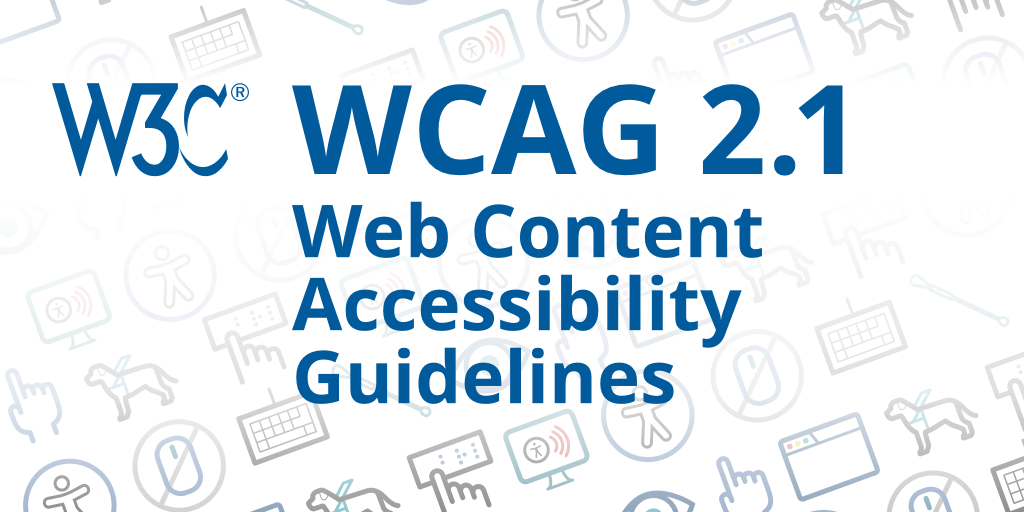The Accessible Platform Architectures Working Group has published Accessibility of Remote Meetings as a Group Note. It is a companion to the W3C resource: How to Make Your Presentations and Meetings Accessible to All. Remote meeting is an umbrella term used to describe real-time discussions or presentations held between two or more parties online. The issues faced by people with disabilities will vary depending on the implementation of accessibility requirements and current limitations of remote meeting software. While W3C has applicable guidance across several standards and Notes relating to real-time communication and XR, it is this level of complexity that this document endeavors to address. For more information, see the blog post Accessibility of Remote Meetings Published as W3C Group Note.
Search Engine Marketing| seo tips | w3c Release | Unlock the secrets of SEO success and W3C standards mastery on our blog. Elevate your online presence with expert insights, staying visible and accessible
Friday, July 22, 2022
Decentralized Identifiers (DIDs) v1.0 is a W3C Recommendation
![]() The Decentralized Identifier Working Group has published Decentralized Identifiers (DIDs) v1.0 as a W3C Recommendation.
The Decentralized Identifier Working Group has published Decentralized Identifiers (DIDs) v1.0 as a W3C Recommendation.
This document defines Decentralized identifiers (DIDs), a new type of identifier that enables verifiable, decentralized digital identity. A DID identifies any subject (e.g., a person, organization, thing, data model, abstract entity, etc.) that the controller of the DID decides that it identifies. In contrast to typical, federated identifiers, DIDs have been designed so that they may be decoupled from centralized registries, identity providers, and certificate authorities. DIDs are URIs that associate a DID subject with a DID document allowing trustable interactions associated with that subject. Each DID document can express cryptographic material, verification methods, or services, which provide a set of mechanisms enabling a DID controller to prove control of the DID. Please read our Press Release to learn more about this tool to empower everyone on the web with privacy-respecting online identity and consent-based data sharing.
W3C offers an Inclusion Fund and Fellowships for TPAC 2022
 As 60% of the world is now online, we want and need to reflect the diversity of the whole world as more people continue to access, use and create the web. We believe that more diversity means better representation, which leads to better and more inclusive design. More diversity also brings higher quality results.
As 60% of the world is now online, we want and need to reflect the diversity of the whole world as more people continue to access, use and create the web. We believe that more diversity means better representation, which leads to better and more inclusive design. More diversity also brings higher quality results.
We are opening today the W3C TPAC Inclusion Fund & Honorarium Fellowships applications, until 31 July. Both offerings are designed for people from an under-represented group who wouldn’t be able to attend or meaningfully contribute to TPAC without financial support.
We are grateful to this year’s sponsors W3C, Coil, Microsoft, Siteimprove, Igalia and an anonymous donor.
You can read more about these programs on the TPAC 2022 registration page, and you can read our CEO Jeff Jaffe 2022 update on diversity and inclusion at W3C.
Tuesday, July 12, 2022
Authorized Translation of WCAG 2.1 in French
 The World Wide Web Consortium published the Authorized French Translation of Web Content Accessibility Guidelines (WCAG) 2.1, Règles pour l’accessibilité des contenus Web (WCAG) 2.1. The Lead Translation Organization for this Authorized Translation was the Access42.
The World Wide Web Consortium published the Authorized French Translation of Web Content Accessibility Guidelines (WCAG) 2.1, Règles pour l’accessibilité des contenus Web (WCAG) 2.1. The Lead Translation Organization for this Authorized Translation was the Access42.
Translations in other languages are listed in WCAG 2 Translations. W3C Web Accessibility Initiative (WAI) particularly encourages the development of Authorized Translations of WCAG 2.1 and other technical specifications to facilitate their adoption and implementation internationally. Read about the Policy for W3C Authorized Translations.
W3C Invites Implementations of CSS Color Module Level 4
The CSS Working Group invites implementations of a Candidate Recommendation Snapshot of CSS Color Module Level 4. This specification describes CSS <color> values, and properties for foreground color and group opacity.
CSS is a language for describing the rendering of structured documents (such as HTML and XML) on screen, on paper, etc.